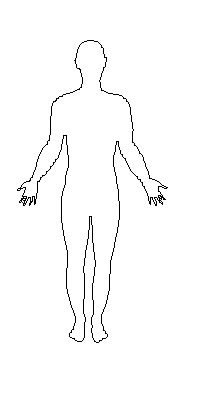
 Our bodies are, for each of us, the most significant of all the physical entities we know. But exactly what kind of entity is a human body? This question, ultimately, takes us all the way back to the very beginning of the universe. Our bodies are, for each of us, the most significant of all the physical entities we know. But exactly what kind of entity is a human body? This question, ultimately, takes us all the way back to the very beginning of the universe.
 According to Science, the body can be broken down into different systems—the respiratory system for breathing, the circulatory system for blood flow, the digestive system for food processing, the reproductive system, and so on. And these systems in turn can be broken down into systems of components called cells, which form the basic building blocks of the body. The cells are the smallest natural unit of life, but even these "building blocks" are made of smaller component systems, although these components are not, strictly speaking, alive. The cells are made of complex molecular systems, which in turn are composed of different molecules, and these in turn can be broken down into various atoms. The atoms themselves are made from only three different components: electrons, protons, and neutrons; but even some of these can be further divided, with the current "ultimate" components—quarks and electrons—susceptible to the probings of future scientists. Utlitmately, of course, even the current basic components rest upon the paradoxical nature of the wave/particle duality, as well as the dichotomy of matter and anitmatter, and the other, more fundamental dualities of modern Quantum Physics. According to Science, the body can be broken down into different systems—the respiratory system for breathing, the circulatory system for blood flow, the digestive system for food processing, the reproductive system, and so on. And these systems in turn can be broken down into systems of components called cells, which form the basic building blocks of the body. The cells are the smallest natural unit of life, but even these "building blocks" are made of smaller component systems, although these components are not, strictly speaking, alive. The cells are made of complex molecular systems, which in turn are composed of different molecules, and these in turn can be broken down into various atoms. The atoms themselves are made from only three different components: electrons, protons, and neutrons; but even some of these can be further divided, with the current "ultimate" components—quarks and electrons—susceptible to the probings of future scientists. Utlitmately, of course, even the current basic components rest upon the paradoxical nature of the wave/particle duality, as well as the dichotomy of matter and anitmatter, and the other, more fundamental dualities of modern Quantum Physics.
|

